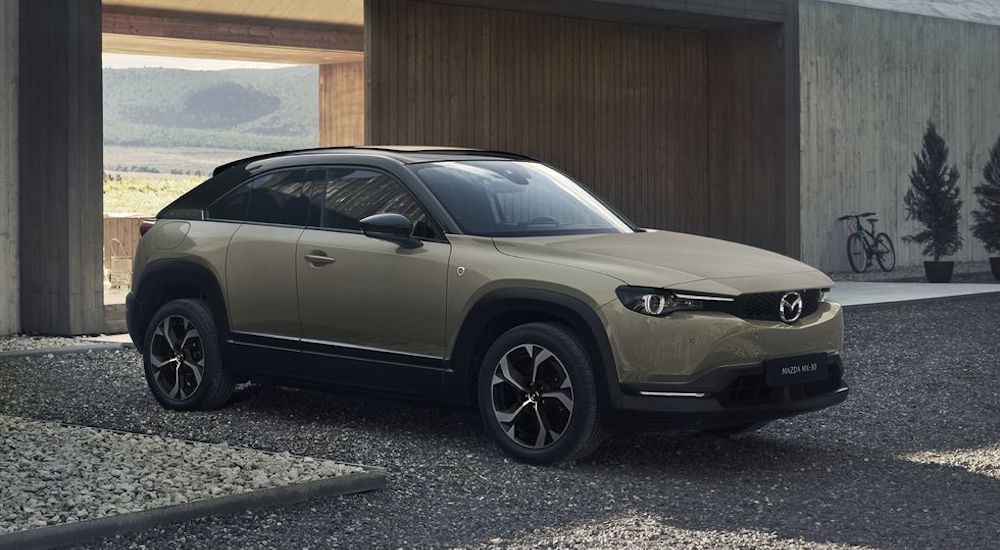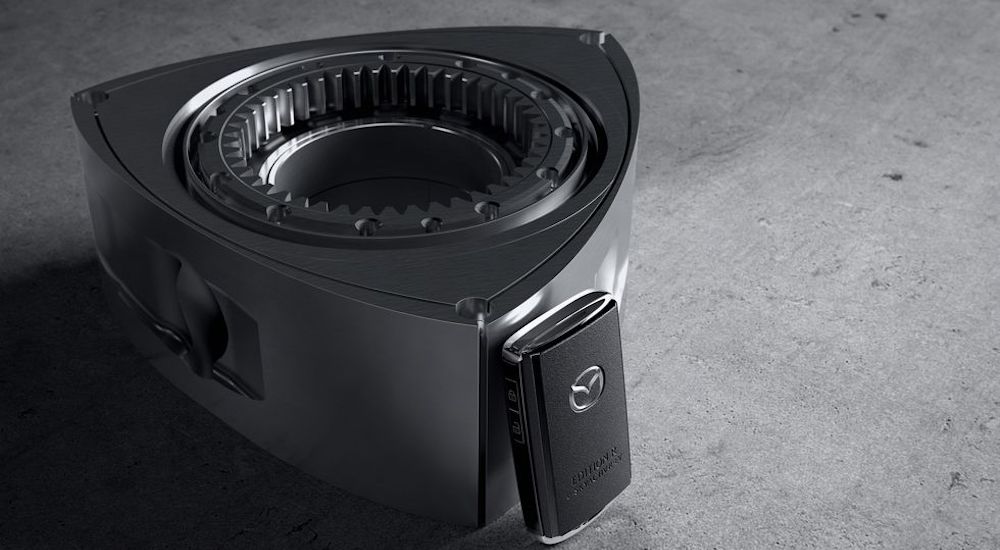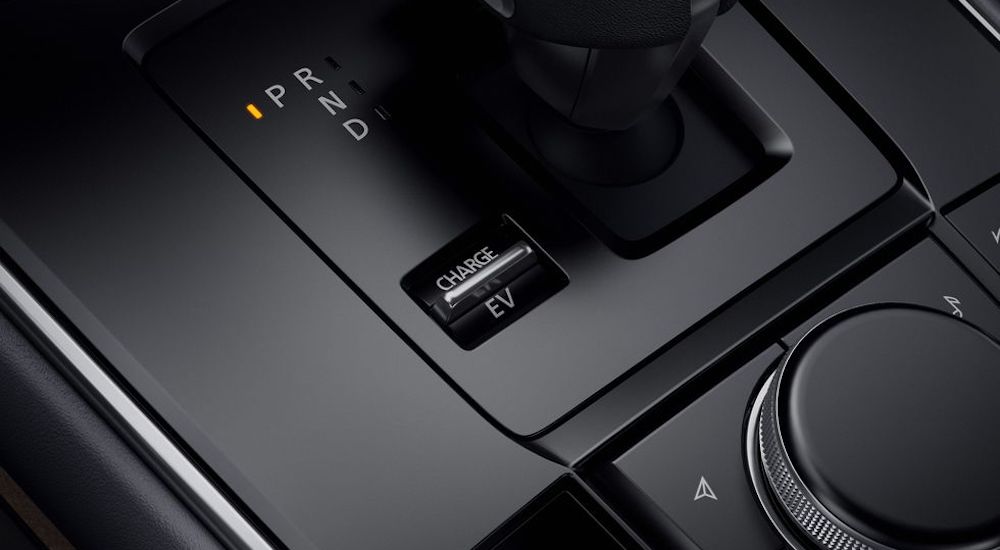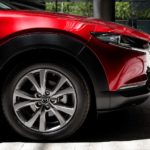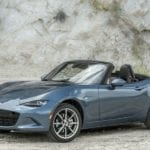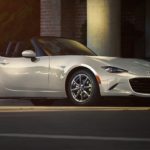Mazda got its start as a cork company, believe it or not, but its entry into the auto industry was noteworthy due to its use of the Wankel rotary engine in the 1960s. Although the brand didn’t invent the rotary engine, Mazda pioneered its use in cars and became the leading user of this type of engine design, which is noted for delivering impressive power at a lighter weight than the piston engines most vehicles use. The last rotary engine Mazda put on the road was in the RX-8, a sports car that was fairly popular until it was discontinued in 2012. Now, however, Mazda has decided to bring the rotary engine back in a way I never expected.
Anyone interested in electric vehicles for sale will notice something: Japanese companies like Mazda are lagging behind a lot of other manufacturers. While American and European companies are racing to make as many EVs as possible, brands like Toyota, Honda, and Mazda have been a lot slower to embrace the all-electric future. At the moment, Mazda’s only electric vehicle is the MX-30, though it’s been joined by the all-new CX-90 Plug-in Hybrid. But recently, Mazda showed off a new option that it’s bringing to the road: a plug-in hybrid electric vehicle (PHEV) called the MX-30 R-EV, which features a unique rotary engine range extender.
Mazda’s Rotary Engine History
Mazda fans are already pretty passionate about rotary engines, but for everyone else, there’s a bit of a history lesson needed here for any of this to matter. First, we can go back more than 100 years to when Mazda got its start as Toyo Cork Kogyo; as the name would suggest, the company made corks. The company soon refocused on manufacturing machine tools and renamed itself Toyo Kogyo. Then, in 1931, it produced its first vehicle: the Mazda-Go auto rickshaw. This was the origin of the Mazda name, but cars were set aside when Toyo Kogyo was ordered by the Japanese government to focus on weapons production in the lead-up to World War II.
Following World War II, Mazda was a major part of rebuilding Japan’s economy, starting in its home city of Hiroshima. In the 1960s, the brand began making its first modern vehicles utilizing the Wankel rotary engine rather than the piston engines other companies used. Other manufacturers, including GM, had toyed around with rotary engines but abandoned them. Mazda embraced the rotary engine, and it became synonymous with its vehicles. The first Mazda imports hit Canada in 1959, though MazdaCanada didn’t begin official operations until 1968, and the light, powerful engines made them immediately popular.
In the years that followed, the major weakness of rotary engines became a problem: while they’re light and powerful, they’re not very fuel efficient. Following the oil crisis of the 1970s, Mazda (still officially Toyo Kogyo at that time but selling its vehicles under the Mazda name) shifted gears. Most models would use piston engines, while rotary engines would be reserved for sports cars and performance vehicles. Mazda implemented this strategy with the iconic RX-7 coupe, which was available from 1978 through 2002, and then the RX-8, which remained the brand’s sole rotary-engine vehicle until it was discontinued in 2012.
The Mazda MX-30 R-EV
So why all this talk about the rotary engine and Mazda’s history? For one thing, I think it’s interesting to look back at how different types of powertrains and engineering have been vital to the auto industry—in an age when there’s so much uproar over going electric, it’s worth noting that this is hardly the first time companies have changed up their engines. For another thing, Mazda has recently announced it’s bringing the rotary engine back, but in a very different form than I would’ve expected.
Right now, the Mazda MX-30 is the only all-electric model in Mazda’s lineup and just one of two electrified options when joined by the all-new Mazda CX-90 PHEV. What Mazda recently revealed is a new MX-30 e-Skyactiv R-EV model. This is built using the same body as the MX-30 EV but is a PHEV instead of an all-electric model. What’s particularly interesting about the MX-30 R-EV is that it uses a small rotary engine (and I mean small; it’s a 0.8L engine) as a generator for the battery that drives its motor. This isn’t the only model out there with a gasoline range extender system, but Mazda used it as an opportunity to make everything circular (both in terms of history and engine design).
The MX-30 e-Skyactiv R-EV has an estimated electric range of 85 km from a full charge, which is plenty of distance for running errands, a daily commute, and much more. When the battery is drained, the rotary engine can kick in and act as a generator to recharge it; this engine is fueled by a 50 L gas tank, though the MX-30 R-EV also supports charging by plugging it into an external power source. One particularly nice detail is the available Edition R for its first model year. It features a Maroon Rouge Metallic roof reminiscent of Mazda’s first passenger vehicle: the R360 Coupe.
What Does This Mean for Mazda’s Lineup?
There are a couple of things to take from this announcement. For starters, Mazda is interested in trying out different approaches to electrified performance beyond traditional hybrids, standard plug-in options, and EVs. Some early reviews on the standard MX-30 were critical of its design and felt like there was space left empty for a range extender of some kind, so it’s no surprise to see one being added. I like the idea of Mazda returning to its roots with the rotary engine as the way to create a backup generator, which seems like a perfect choice since it adds little weight while providing excellent power.
But here’s the rub: so far, Mazda hasn’t said anything about bringing the MX-30 e-Skyactiv R-EV to Canada or anywhere else outside of Europe. The brand hasn’t said it’s not going to happen or anything but has been quite tightlipped about whether the R-EV will hit our shores. There’s some hope, however, because Mazda recently expanded the availability of the all-electric MX-30. The 2022 Mazda MX-30 EV was only offered in Quebec and British Columbia as Mazda got a feel for how well it would be received; the 2023 MX-30 EV is now available throughout all of Canada, which is great. We might see something similar with the R-EV enjoying a limited initial release in Europe, then going worldwide sometime in the future.
Mazda and EVs Going Forward
While I love seeing Mazda use a rotary engine as a range extender for a PHEV model, I can’t help but think it also reveals more about the brand’s continued struggle with embracing EVs. Mazda has the all-electric MX-30, but all the electrified models since have been PHEVs. If Mazda wants to keep up with brands like Tesla, Ford, Volkswagen, and others, then it needs to embrace electrification and make it a bigger part of the lineup. The oil crisis nearly saw Mazda’s ruin—it was on the verge of bankruptcy in 1975 and was only saved by the intervention of the Sumitomo Bank—and the brand could be setting itself up for similar problems if it is slow to shift gears now. Of course, Mazda models have always been known for quick shifting and bold performance, so I’m not too worried.
